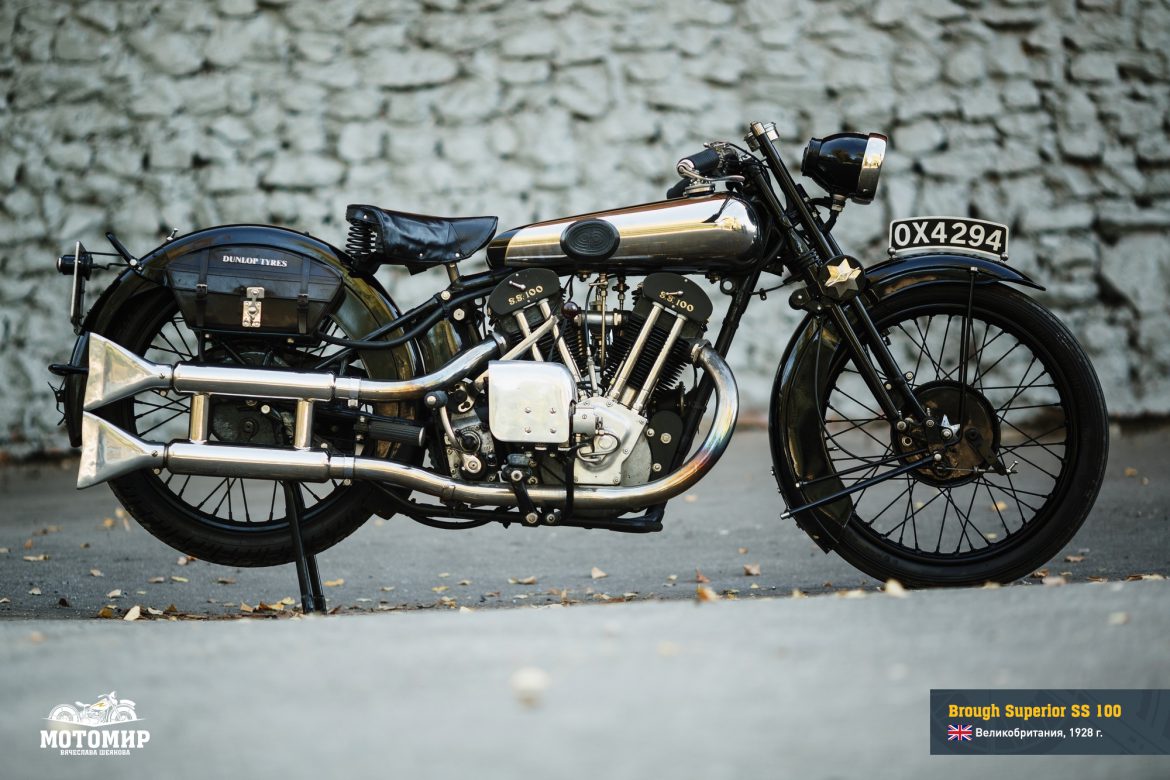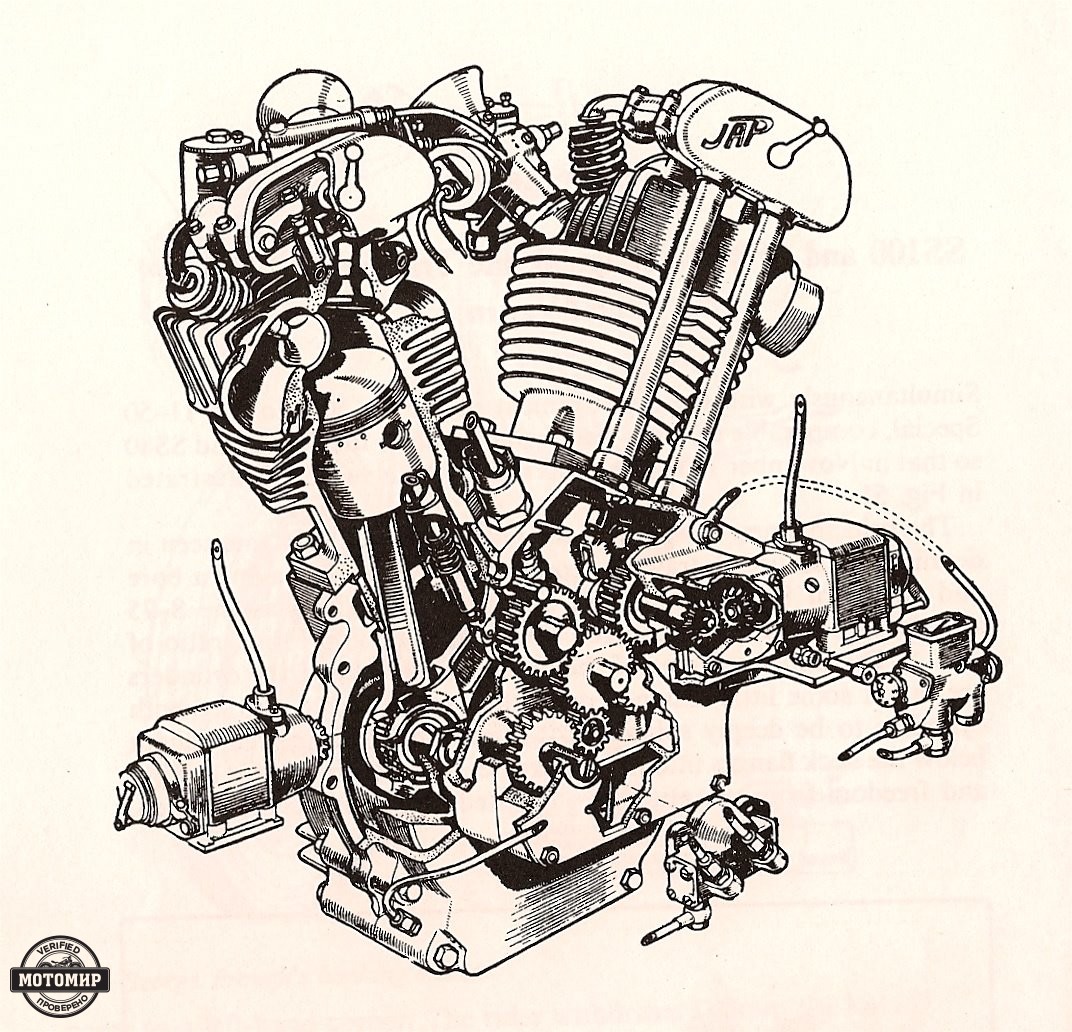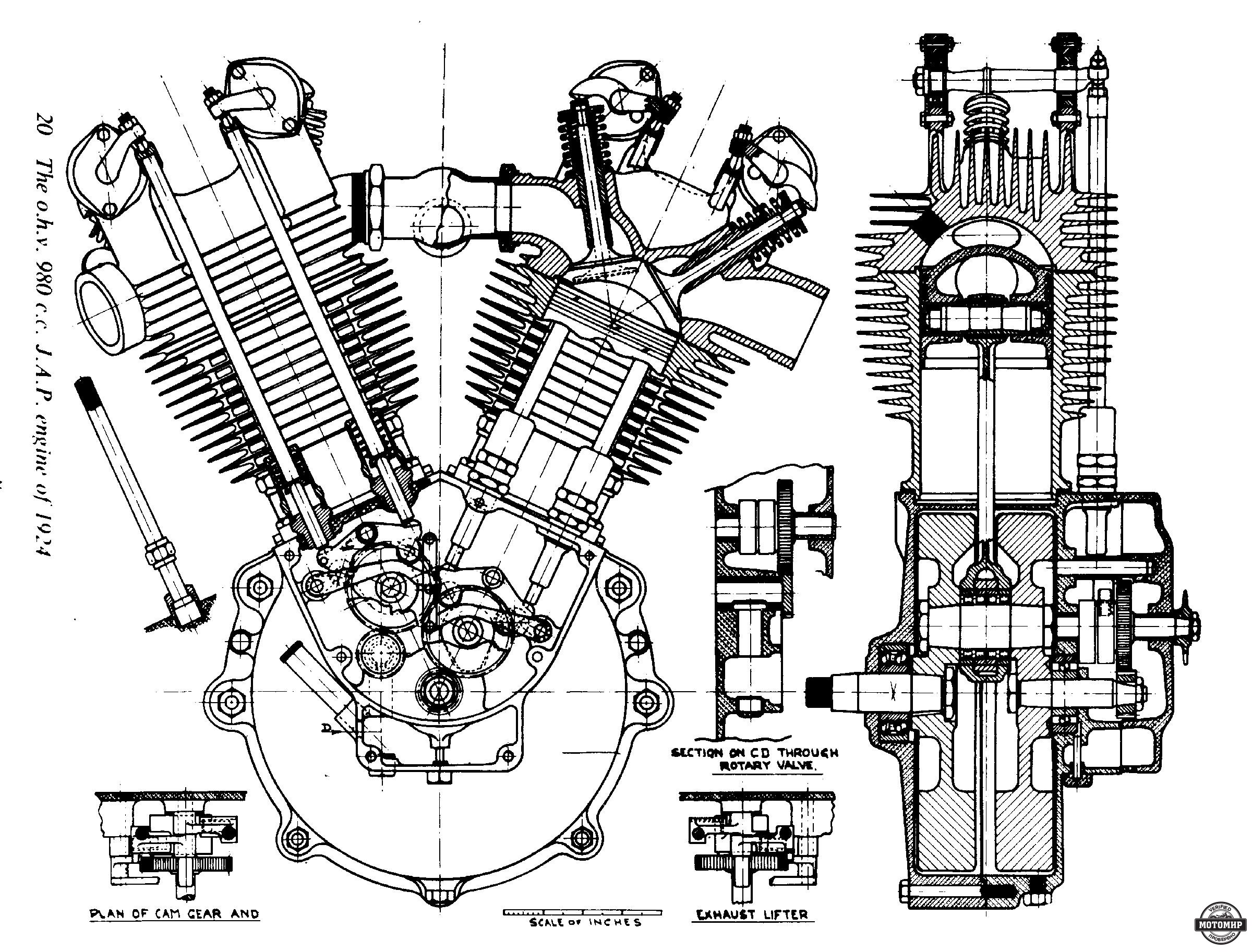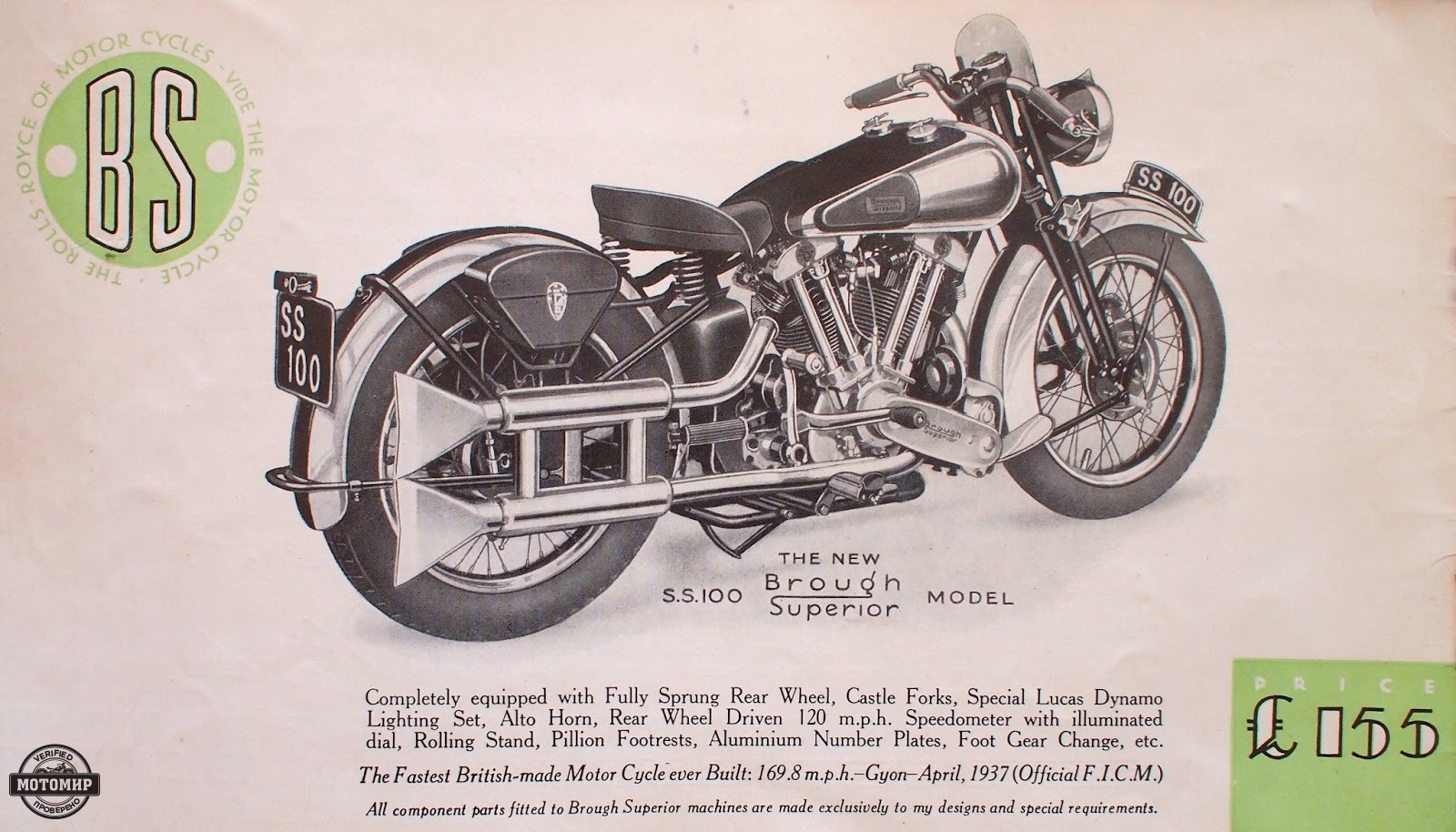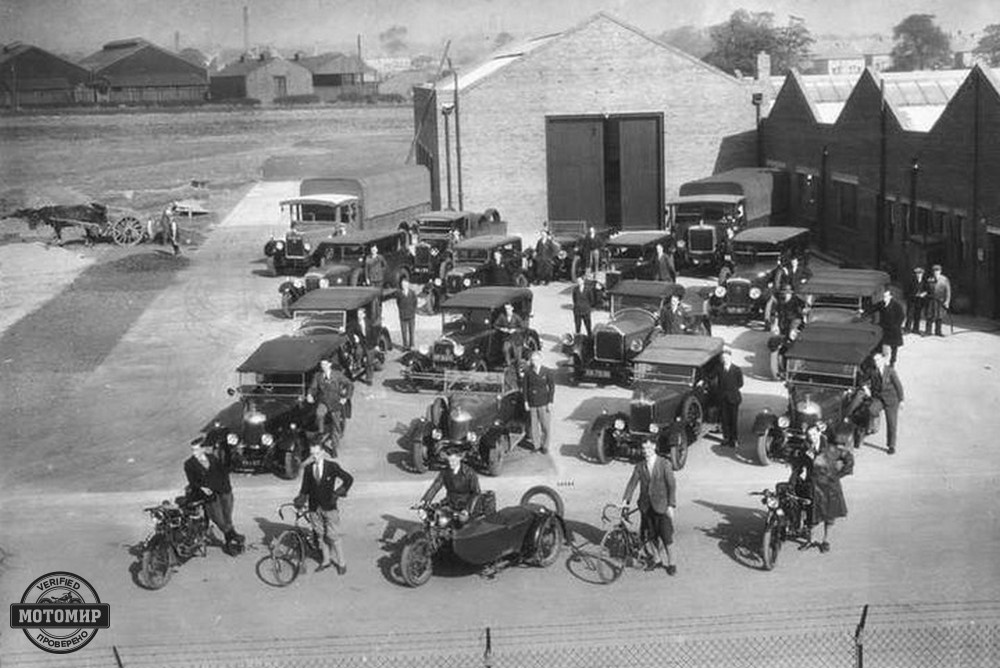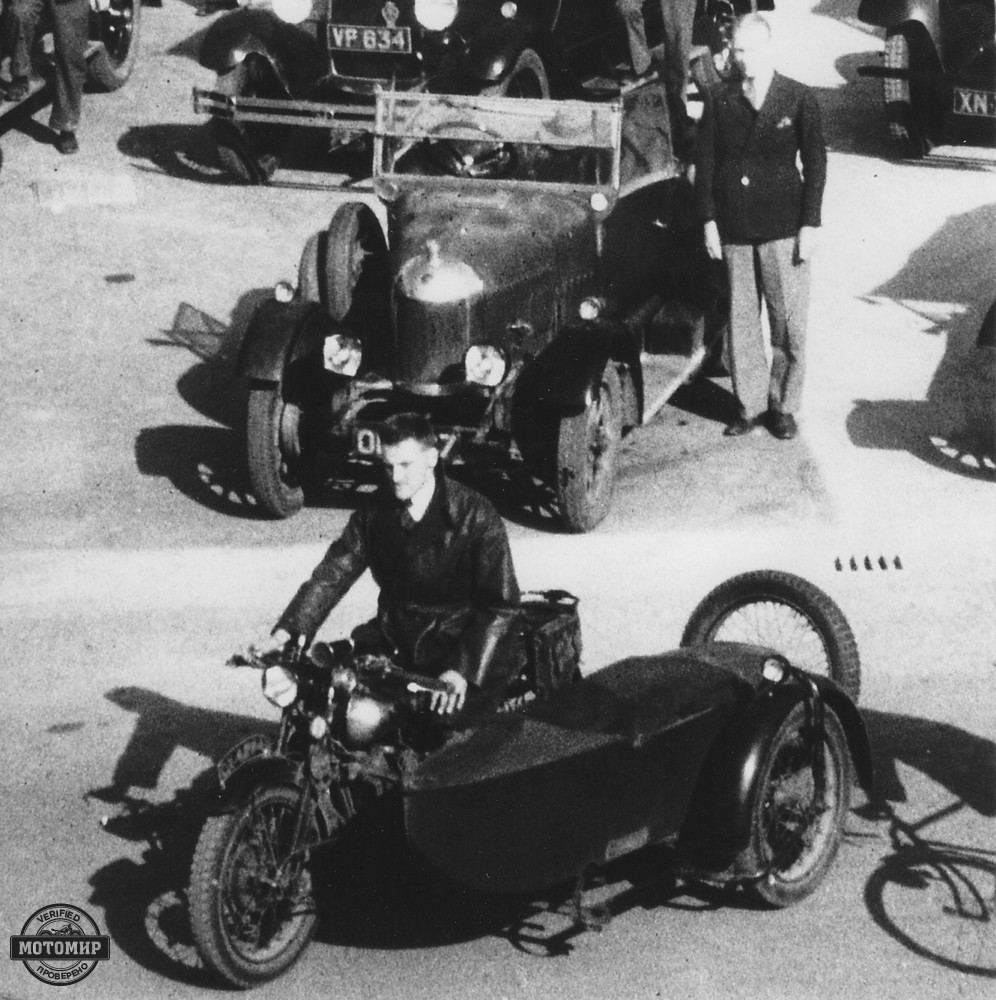This entry is also available in: Russian Chinese (Traditional)
For a long time, he worked with his father, combining the engineering school with motorcycle racing. George became one of the best athletes in the UK (for three years in a row he took first place in the race London – Edinburgh). The paths of son and father parted when George decided to create the world’s most perfect motorcycle, which he wanted to name Brough Superior.
Actually, George’s friend, Ike Webb, came up with this provocative name for a new motorcycle. While they were hanging out together in a bar, Ike lightheartedly said; “Why not call it Brough Superior?”. This silly joke insulted William Brough to the core, and he replied; “I guess it will make me Brough Inferior?” But George did not pay attention to his father’s offense and continued to strive for his dream. The first five motorcycles were assembled right in a garage in late 1919. Soon he bought a small piece of land on Haydn Road in Nottingham and built a small workshop, office, and store.
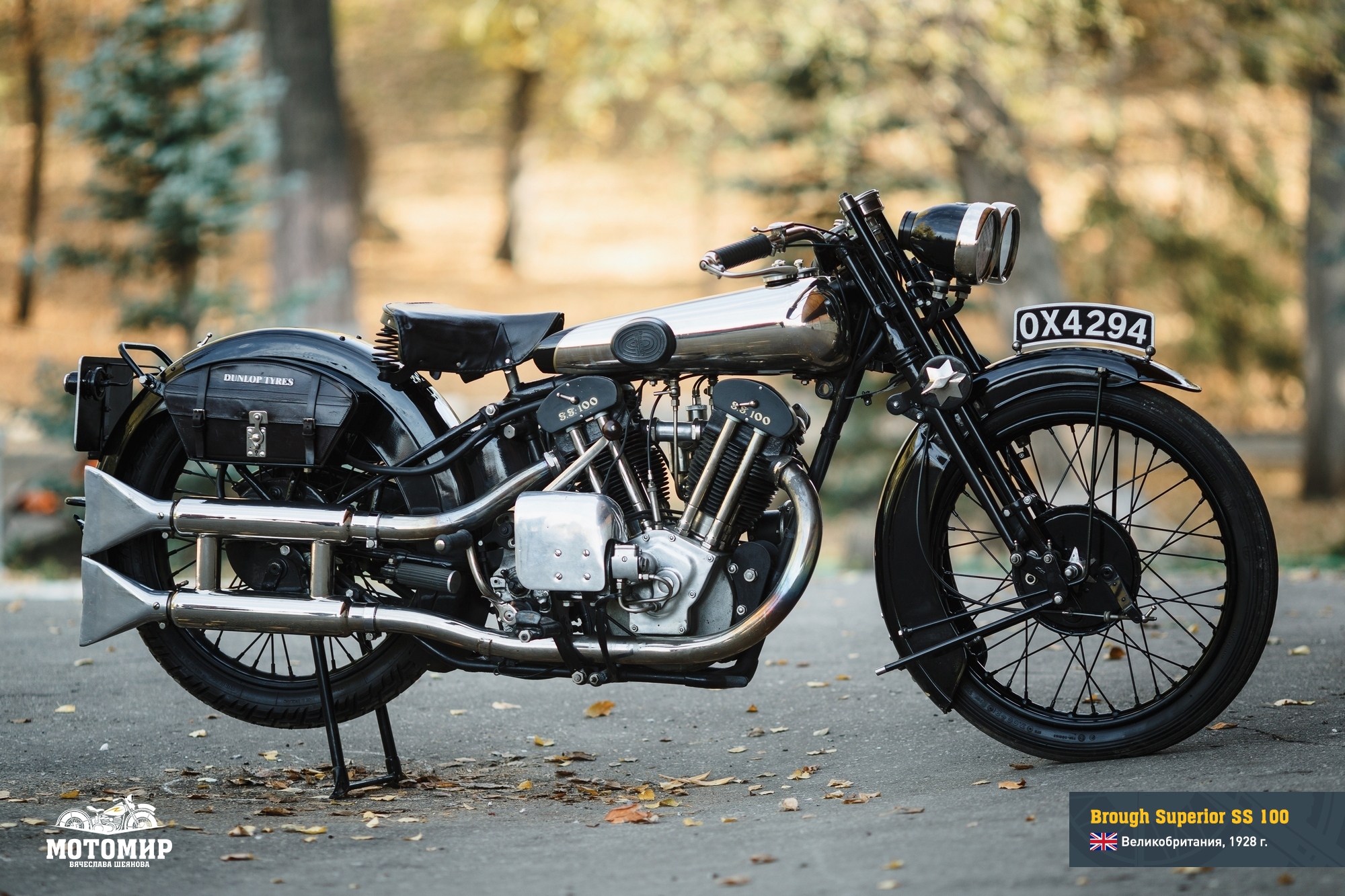
Brough Superior SS100 located at “Motorworld by V.Sheyanov” museum
The motorcycle had a two-cylinder V-shaped OHV JAP engine with a working volume of 988 ccm and a 50 degrees angle between the cylinders. Maximum engine power was 45 hp at 4800 rpm (Brough Superior, like the Rolls-Royce, never reported official data on the engine power of their motorcycles).
Brough Superior bikes were assembled by hand and were constantly updated. George designed his motorcycles based on the personal experience of a professional racer. This played a significant role in their success. When a more advanced version of the JAP engine (or Matchless – since 1926, some bikes were equipped with these engines) was coming out, the bikes were immediately upgraded.
Thus, in 1923-1924 it was decided to improve the engine with overhead valves (installed on the previous model Brough Superior SS80), taking into account the latest achievements of the factory in Tottenham, where a new engine with a working volume of 980 ccm (cylinder diameter x stroke: 85.7 x 85 mm) was developed.
The development of the new power unit, which was based on the old engine with a cylinder diameter of 90 mm, lasted almost two years. In a drawing, dated 1924, you can see four cams on two camshafts, with the shafts located on the axis of the cylinders, rather than slightly shifted, as was typical of an engine with a cylinder diameter of 90 mm.
No less significant was the change in the design of cylinder heads. Heavy valve levers were replaced by long cross-beams mounted through single-row roller bearings with an offset of 3.375 inches from the center. The cylinder heads had a spherical cavity, inside of which there were two valves with axes at 45° to each other. The pistons were shortened, their bottoms were now spherical and had three compression rings. Each valve got two springs, the lubrication was done by a mechanical oil pump. The oil consumption was 1450 miles per gallon. Some engines, produced since 1924, were equipped with valve beams with needle bearings.
In cooperation with Herbert le Vack, a closed-loop frame (duplex frame) was created for this new power unit. A distinctive feature of this frame was the complete absence of unbolted clamps.
The motorcycle was equipped with a three-speed manual gearbox with pinions made of steel with a strength of 120 tons, and located in a heavy Sturmey Archer crankcase. The hinge was installed directly on the gearbox. The leg was well-positioned when it was necessary to quickly engage the second gear. This was the design of the SS100 when it was first presented to the public in the Olympia exhibition center, in 1924.
The fame of the Brough Superior was greatly contributed by its sporting achievements. In the 1920s, George Brough’s motorcycles were successful in sprint racing, track racing, and mountain racing. In 1924, Bert LeVack on a specially prepared 1000cc OHV bike set an absolute speed record for motorcycles – 191.59 km/h.
The charisma and genius of George Brough played a big role in creating some kind of cult of Brough Superior. By modern standards, there were not many motorcycles produced (about 3000 copies) but the thing was that, against all odds, George followed his dream and created a motorcycle that became the national pride of the British Empire.
The most famous model in the history of Brough Superior called “SS 100” (Super Sports) was presented in November 1924. The numbers in its name meant that it was able to reach speeds of at least 100 miles per hour. Each motorcycle was equipped with a special certificate confirming that this speed was achieved during the tests.
Here is a quote from the 1925 catalog: “Each SS100 model comes with a certificate, confirming that the motorcycle did achieve 100 mph on a quarter-mile distance. For such tests, a private 1.75 mile road was kindly made available to the manufacturer.”
From the very beginning, the Brough Superior bikes were called “Rolls-Royce among motorcycles”. This was used as an advertising slogan after the representatives of Rolls-Royce gave their permission to that.
The bikes were as perfect as the Rolls-Royce and far beyond the technical limits of road motorcycles of the time.
The most famous fans of the brand were George Bernard Shaw, as well as Lawrence of Arabia.
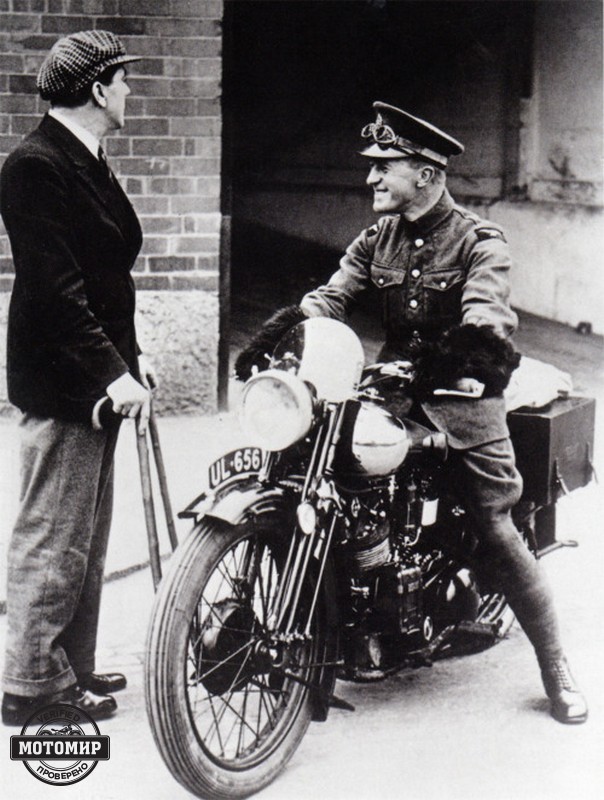
Марка Brough Superior прочно связана с легендарным Лоуренсом Аравийским, неуёмный дух которого питал особую любовь к этим благородным и мощным машинам. На фото Джордж Браф и Лоуренс Аравийский за рулем Brough Superior SS80.
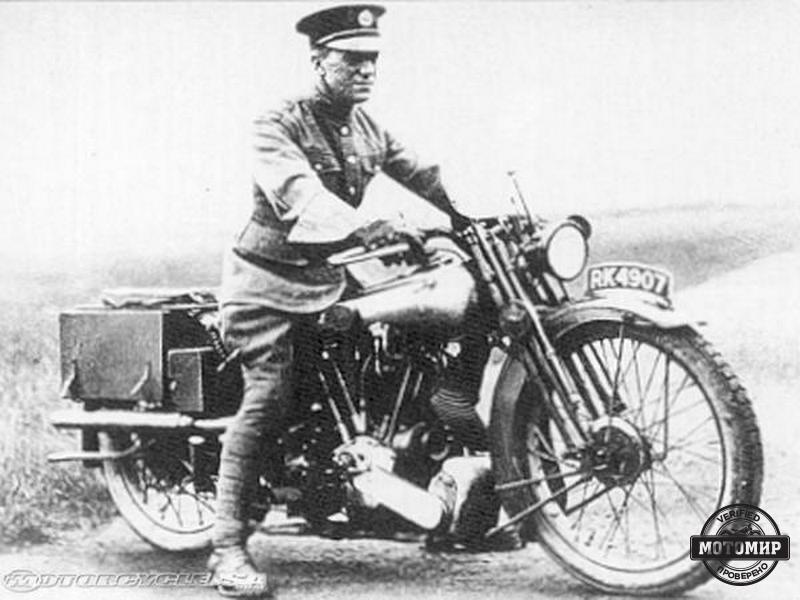
T.E. Lawrence riding Brough Superior
British national hero, adventurer, and traveler Thomas Edward Lawrence was an experienced motorcyclist and loved speed; he owned eight Brough Superior motorcycles. This passion once led to a tragedy. On May 13, 1935, Lawrence was riding on a Brough Superior SS 100 on a country road near his house. Suddenly, a few children on bicycles appeared on the road. Trying to avoid a collision Lawrence made a sharp turn, lost control, and severely injured his head when he hit the ground. Six days later he died.
The tragedy made a great impression on one of the doctors who tried to save Lawrence’s life, a young neurosurgeon Hugh Cairns. He dedicated a lot of time to a special study, analyzing 2279 lethal motorcycle accidents. The results of Cairns’ research, published in several articles in the British Medical Journal, between 1941 and 1946, played an important role in the development and implementation of motorcycle helmets. In the early 1950s, the British Standards Institute, commissioned by the British Department of Transportation, was the first in the world to formulate a set of requirements and testing methods for motorcycle helmets.
The Brough Superior motorcycle from our collection has an interesting destiny. Once it belonged to Dunlop company, which bought it in 1931 on the occasion of its 40th anniversary. Based on the information that we are now confirming, the motorcycle was used for advertising and testing of Dunlop tires, it also participated in all kinds of promotions of the company.
This motorcycle went through the war. You can see on the picture that originally Brough Superior SS100 was used with a sidecar, but it didn’t survive to this day. In 1946, a severely damaged frame was replaced by a temporary non-original frame.
The bike had this “donor-frame” until 2001, when, finally, the original Brough Superior frame was installed and the restoration of the motorcycle was complete. The engine was fully restored as well.
In 2008, the motorcycle was purchased by Michael FitzSimons, a collector and specialist in Brough Superior motorcycles with 40 years of experience. FitzSimons owned all models of the Brough Superior brand, but recently he began to sell motorcycles from his collection. Explaining why he does it, he refers to his respectable age and the well-known saying “who dies with the least toys wins.”
Thus, in 2012, the motorcycle was put up for auction. Before the auction, the motorcycle was carefully checked, the engine was completely disassembled; this has proven the excellent condition of all parts and components. Secretary of the Brough Superior Club, Mike Leatherdale, confirmed the authenticity of the bike. As a result of bidding, the Brough Superior SS100 became a part of the Motorworld by V. Sheyanov collection.
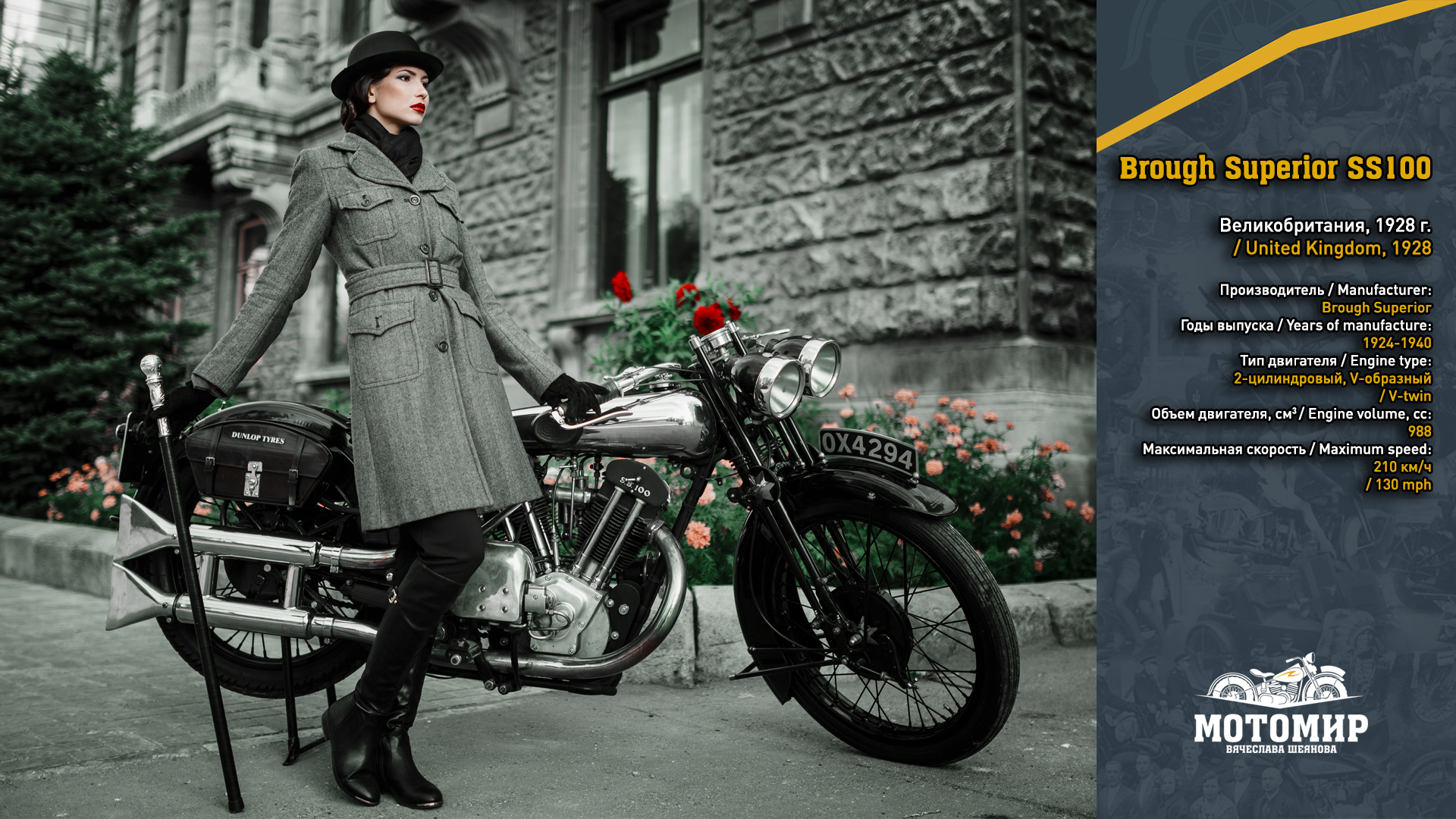
Brough Superior SS100 located at “Motorworld by V.Sheyanov” museum [1920×1080 FullHD]
It should be noted that George Brough didn’t reach the heights of commercial success and his bills were paid only thanks to the UK defense order. However, this brilliant man was able to achieve the goal of his life and create the best motorcycle of all time.
| Manufacturer | Brough Superior, England |
| Years of manufacture | 1924 – 1940 |
| Quantity produced, units | 383 |
| Price | 170 £ |
| Today’s value | 11011,52 $ |
| ENGINE AND TRANSMISSION | |
| Type | Twin-cylinder, V-shape |
| Engine capacity, cc | 980 |
| Bore & stroke, mm | 85,7 x 85 |
| Engine power | 45 h.p. at 4800 rpm |
| Sparking | Magneto Lucas |
| Carburator | Binks 1¼ |
| Battery | 6 V |
| Clutch | Multiple plate |
| Transmisson | 3-speed |
| FRAME AND WHEELBASE | |
| Type | Tubular |
| Front suspession | Leading-link, with Castle friction damper |
| Rear suspession | Rigid |
| Brakes | Drum type |
| Wheel size | 3,0 х 19 |
| DIMENSIONS | |
| Length, mm |
2 200*
|
| Widgth, mm |
820*
|
| Height, mm |
1 030*
|
| Wheel base, mm |
1 499
|
| Ground clearence, mm |
110*
|
| Seat height, mm |
770*
|
| Mass, kg |
154
|
| Gas tank size, l |
18
|
| Maximum speed, km/h |
210
|
| Range, km |
350
|

























